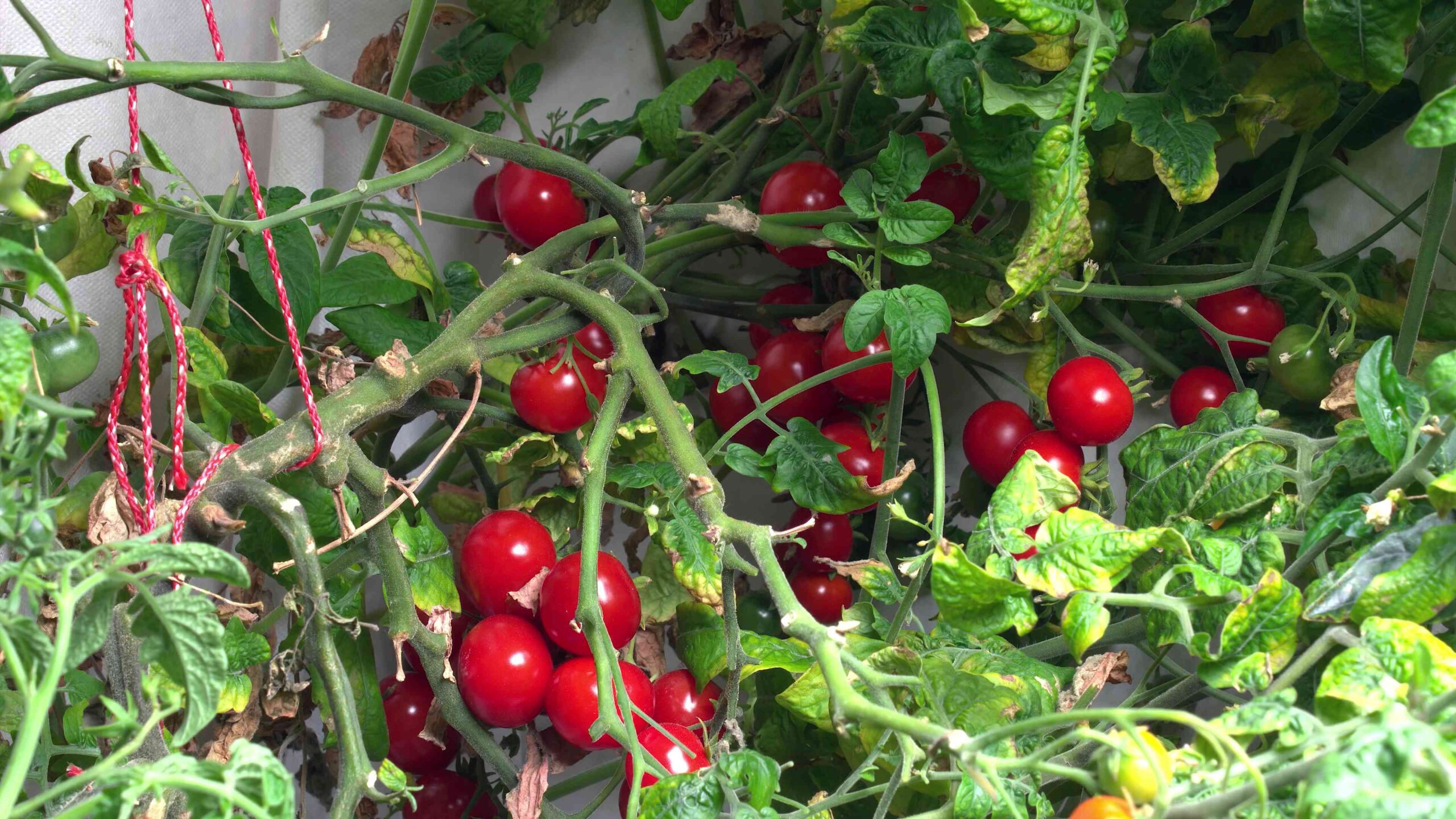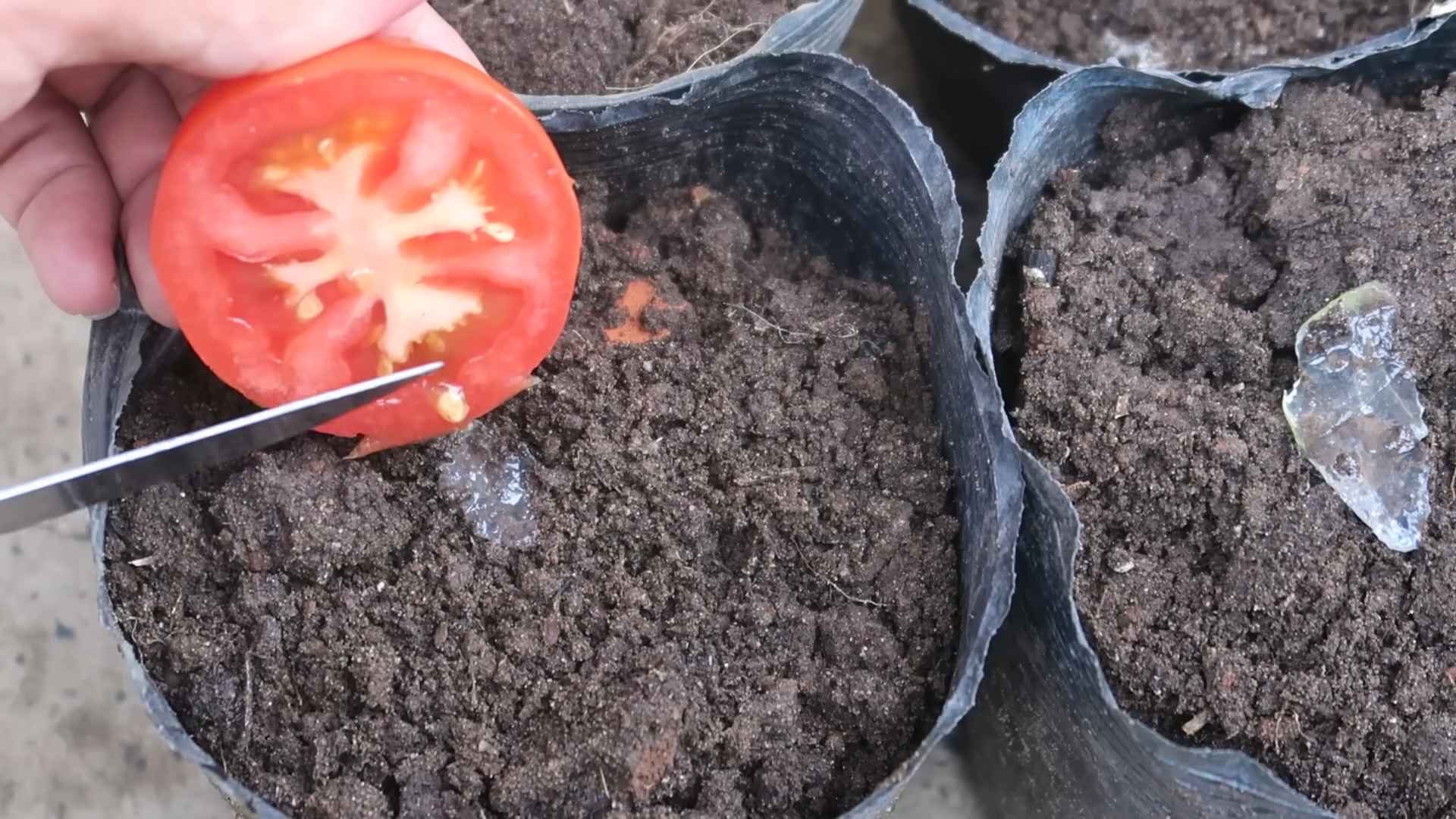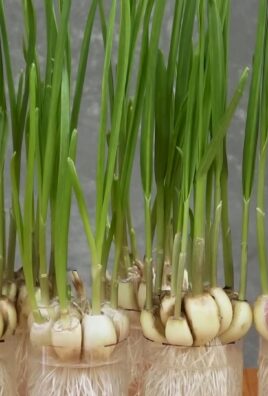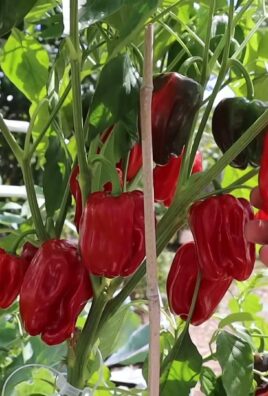Grow Cherry Tomatoes Home, and unlock a world of fresh, flavorful goodness right outside your door! Imagine plucking sun-ripened, juicy cherry tomatoes straight from the vine and adding them to your salads, snacks, or even a gourmet pizza. Sounds dreamy, right? Well, it’s more achievable than you think, even if you don’t have acres of land. For centuries, home gardening has been a source of sustenance and joy, connecting us to the earth and providing fresh produce. From ancient Roman courtyards to modern-day balconies, the desire to cultivate our own food has remained a constant.
But let’s be honest, sometimes the thought of starting a garden can feel overwhelming. Where do you even begin? That’s where these DIY tricks and hacks come in! I’m here to share some simple, effective methods to help you grow cherry tomatoes home successfully, regardless of your experience level or space constraints. Whether you’re a seasoned gardener or a complete newbie, these tips will empower you to cultivate a thriving cherry tomato patch.
Why cherry tomatoes, you ask? Well, besides being incredibly delicious, they’re relatively easy to grow and incredibly rewarding. Plus, knowing exactly where your food comes from and that it’s free from harmful chemicals is a huge peace of mind. So, let’s ditch the store-bought tomatoes and embark on this exciting journey together! Get ready to roll up your sleeves and discover the secrets to a bountiful cherry tomato harvest.

Growing Cherry Tomatoes at Home: A Beginner’s Guide
Hey there, fellow gardening enthusiasts! I’m so excited you’re thinking about growing cherry tomatoes. They’re incredibly rewarding, bursting with flavor, and surprisingly easy to cultivate, even if you’re a complete newbie. I’ve been growing them for years, and I’m here to share all my secrets to help you have a bountiful harvest.
Choosing the Right Cherry Tomato Variety
Before we dive into the nitty-gritty, let’s talk about choosing the right variety. There are tons of different cherry tomato types, each with its own unique characteristics. Here are a few of my favorites:
* Sungold: These are my absolute go-to! They’re incredibly sweet, almost like candy, and have a beautiful golden-orange color. They tend to be a bit more delicate, but the flavor is worth it.
* Sweet Million: As the name suggests, these produce a massive amount of small, sweet red tomatoes. They’re very prolific and disease-resistant, making them a great choice for beginners.
* Black Cherry: These have a rich, complex flavor with a hint of smokiness. They’re a bit more unusual in appearance, with a deep reddish-purple color.
* Grape Tomatoes: These are oblong shaped and have a slightly thicker skin than other cherry tomatoes. They are very popular in salads.
Consider your taste preferences, the amount of space you have, and your local climate when making your decision.
Getting Started: Seeds vs. Seedlings
You have two options for starting your cherry tomato plants: from seeds or from seedlings (small plants you buy at a nursery).
* Starting from Seeds: This is the more economical option, and it gives you more control over the entire process. However, it requires a bit more time and effort. You’ll need to start your seeds indoors about 6-8 weeks before the last expected frost in your area.
* Buying Seedlings: This is the easier option, especially if you’re short on time or space. Just make sure to choose healthy-looking plants with sturdy stems and no signs of disease.
I personally prefer starting from seeds because I enjoy the process and I can choose from a wider variety of tomatoes.
Starting Cherry Tomatoes from Seeds (My Preferred Method!)
Here’s how I start my cherry tomato seeds indoors:
1. Gather Your Supplies: You’ll need:
* Cherry tomato seeds
* Seed starting trays or small pots
* Seed starting mix (a light, sterile soil mix)
* A spray bottle filled with water
* A heat mat (optional, but helpful)
* A grow light (optional, but highly recommended)
2. Sow the Seeds: Fill your seed starting trays or pots with seed starting mix. Moisten the soil with your spray bottle. Sow 2-3 seeds per cell or pot, about 1/4 inch deep. Gently cover the seeds with soil.
3. Provide Warmth and Moisture: Place the trays or pots on a heat mat (if using) and cover them with a clear plastic dome or plastic wrap to create a humid environment. Keep the soil consistently moist, but not soggy.
4. Provide Light: Once the seeds germinate (sprout), remove the plastic dome or wrap and place the trays or pots under a grow light. If you don’t have a grow light, place them in a sunny window, but be aware that they may not get enough light.
5. Thin the Seedlings: Once the seedlings have their first true leaves (the second set of leaves that appear after the initial seed leaves), thin them to one plant per cell or pot. Choose the strongest, healthiest-looking seedling and snip off the others at the soil line.
6. Harden Off the Seedlings: Before transplanting your seedlings outdoors, you need to “harden them off.” This means gradually exposing them to outdoor conditions over a period of 1-2 weeks. Start by placing them outdoors in a sheltered location for a few hours each day, gradually increasing the amount of time they spend outside. This will help them acclimate to the sun, wind, and temperature changes.
Transplanting Cherry Tomato Seedlings Outdoors
Once the danger of frost has passed and your seedlings are hardened off, it’s time to transplant them into your garden.
1. Choose a Sunny Location: Cherry tomatoes need at least 6-8 hours of sunlight per day. Choose a location in your garden that gets plenty of sun.
2. Prepare the Soil: Cherry tomatoes prefer well-drained soil that is rich in organic matter. Amend your soil with compost or other organic matter before planting.
3. Dig the Holes: Dig holes that are slightly larger than the root balls of your seedlings. Space the holes about 2-3 feet apart, depending on the variety of cherry tomato you’re growing.
4. Plant the Seedlings: Gently remove the seedlings from their trays or pots. Loosen the roots slightly and place the seedlings in the holes. Backfill the holes with soil and gently firm the soil around the base of the plants.
5. Water Thoroughly: Water the seedlings thoroughly after planting.
6. Add Support: Cherry tomato plants can get quite tall and heavy, so it’s important to provide them with support. You can use stakes, cages, or trellises. I personally prefer using tomato cages because they’re easy to install and provide good support.
Caring for Your Cherry Tomato Plants
Once your cherry tomato plants are in the ground, it’s important to provide them with proper care to ensure a bountiful harvest.
1. Watering: Water your cherry tomato plants regularly, especially during hot, dry weather. Aim to water deeply and infrequently, rather than shallowly and frequently. Water at the base of the plants to avoid wetting the foliage, which can lead to disease.
2. Fertilizing: Cherry tomatoes are heavy feeders, so it’s important to fertilize them regularly. Use a balanced fertilizer that is specifically formulated for tomatoes. Follow the instructions on the fertilizer package. I like to use a liquid fertilizer every 2-3 weeks.
3. Pruning: Pruning your cherry tomato plants can help improve air circulation and prevent disease. Remove any suckers (small shoots that grow between the main stem and the branches) that appear below the first flower cluster. You can also remove any yellowing or diseased leaves.
4. Pest and Disease Control: Keep an eye out for pests and diseases. Common pests include aphids, tomato hornworms, and whiteflies. Common diseases include early blight, late blight, and blossom end rot. There are many organic and non-organic methods for controlling pests and diseases. I prefer to use organic methods whenever possible. Neem oil is a great all-purpose organic pesticide and fungicide.
5. Mulching: Mulching around your cherry tomato plants can help retain moisture, suppress weeds, and regulate soil temperature. Use organic mulch such as straw, wood chips, or shredded leaves.
Harvesting Your Cherry Tomatoes
The best part of growing cherry tomatoes is, of course, harvesting them!
1. When to Harvest: Cherry tomatoes are typically ready to harvest about 60-80 days after transplanting. They should be fully colored and slightly soft to the touch.
2. How to Harvest: Gently twist or snip the tomatoes from the vine. Be careful not to damage the plants.
3. Storage: Cherry tomatoes can be stored at room temperature for a few days. For longer storage, refrigerate them.
Troubleshooting Common Problems
Even with the best care, you may encounter some problems when growing cherry tomatoes. Here are a few common issues and how to address them:
* Blossom End Rot: This is caused by a calcium deficiency. To prevent blossom end rot, make sure your soil is rich in calcium and water your plants consistently. You can also add calcium to the soil by using bone meal or crushed eggshells.
* Early Blight: This is a fungal disease that causes dark spots on the leaves. To prevent early blight, provide good air circulation around your plants and avoid wetting the foliage. You can also treat early blight with a fungicide.
* Tomato Hornworms: These are large green caterpillars that can quickly defoliate your tomato plants. Handpick them off the plants and drop them into a bucket of soapy water.
Enjoying Your Harvest
Now that you’ve harvested your delicious cherry tomatoes, it’s time to enjoy them! They’re great eaten fresh off the vine, added to salads, roasted, or used in sauces. I love to make a simple cherry tomato pasta sauce with garlic, olive oil, and basil.
Growing cherry tomatoes is a rewarding experience that anyone can enjoy. With a little bit of planning and effort, you can have a bountiful harvest of delicious, homegrown tomatoes. Happy gardening!

Conclusion
So, there you have it! Growing cherry tomatoes at home, even if you don’t have a sprawling garden, is entirely within your reach. This DIY trick, utilizing readily available materials and a little bit of patience, opens up a world of fresh, flavorful possibilities right on your windowsill or balcony. We’ve shown you how to bypass the complexities of traditional gardening and create a thriving mini-tomato farm in a surprisingly small space.
Why is this a must-try? Because the taste of a sun-ripened, homegrown cherry tomato, bursting with sweetness, is simply incomparable to anything you can buy in a store. You control the entire process, from the soil to the watering, ensuring a healthy and delicious harvest. Plus, it’s incredibly rewarding to watch your tiny seedlings transform into vibrant, fruit-bearing plants. It’s a fantastic way to connect with nature, even in an urban environment.
But the fun doesn’t stop there! Feel free to experiment with different varieties of cherry tomatoes. Yellow pear tomatoes, grape tomatoes, or even black cherry tomatoes can all thrive using this method. Consider adding companion plants like basil or marigolds to your container to deter pests and enhance the flavor of your tomatoes. You can also adjust the size of your container depending on the space you have available, just remember to adjust the amount of soil and nutrients accordingly.
Another variation to consider is the type of support you provide for your growing plants. While a simple stake works well, you could also use a small trellis or even create a hanging basket for a cascading effect. This not only adds visual appeal but also helps to keep the tomatoes off the ground, preventing rot and disease.
Don’t be intimidated! This DIY project is designed to be simple and accessible, even for beginners. The key is to provide your plants with plenty of sunlight, consistent watering, and a nutrient-rich growing medium. With a little bit of care and attention, you’ll be enjoying a bountiful harvest of delicious cherry tomatoes in no time.
We wholeheartedly encourage you to give this DIY trick a try. Imagine the satisfaction of adding your own homegrown cherry tomatoes to salads, pasta dishes, or simply enjoying them as a healthy snack. It’s a small investment of time and effort that yields a surprisingly large return in flavor and enjoyment.
And most importantly, we want to hear about your experience! Share your photos, tips, and challenges in the comments below. Let us know which varieties you tried, what worked well, and what you would do differently next time. Your feedback will help other readers and contribute to a community of passionate home gardeners. Let’s all learn and grow together! So, get your hands dirty and start growing cherry tomatoes at home today! You won’t regret it.
Frequently Asked Questions (FAQ)
What kind of soil is best for growing cherry tomatoes in containers?
The best soil for growing cherry tomatoes in containers is a well-draining potting mix. Avoid using garden soil, as it tends to compact in containers and doesn’t provide adequate drainage. Look for a potting mix that contains ingredients like peat moss, perlite, and vermiculite, which will help to retain moisture while also allowing excess water to drain away. You can also amend your potting mix with compost or other organic matter to provide additional nutrients. A slightly acidic pH between 6.0 and 6.8 is ideal for cherry tomatoes.
How much sunlight do cherry tomatoes need?
Cherry tomatoes need at least 6-8 hours of direct sunlight per day to thrive. If you’re growing them indoors, place them near a sunny window that receives plenty of light. If you don’t have enough natural light, you can supplement with grow lights. Rotate your plants regularly to ensure that all sides receive equal exposure to sunlight. Insufficient sunlight can lead to leggy growth, reduced fruit production, and bland-tasting tomatoes.
How often should I water my cherry tomato plants?
Water your cherry tomato plants regularly, especially during hot and dry weather. The frequency of watering will depend on the size of your container, the type of soil you’re using, and the weather conditions. A good rule of thumb is to water when the top inch of soil feels dry to the touch. Water deeply, until water drains out of the bottom of the container. Avoid overwatering, as this can lead to root rot. During periods of heavy rain, you may need to reduce the frequency of watering.
What kind of fertilizer should I use for cherry tomatoes?
Cherry tomatoes are heavy feeders and require regular fertilization to produce a bountiful harvest. Use a balanced fertilizer that is specifically formulated for tomatoes. Look for a fertilizer with an NPK ratio (nitrogen, phosphorus, potassium) of around 5-10-5 or 10-10-10. Fertilize your plants every 2-3 weeks, following the instructions on the fertilizer package. You can also use organic fertilizers, such as compost tea or fish emulsion. Avoid over-fertilizing, as this can lead to excessive foliage growth and reduced fruit production.
How do I prevent pests and diseases from affecting my cherry tomato plants?
There are several things you can do to prevent pests and diseases from affecting your cherry tomato plants. First, choose disease-resistant varieties of cherry tomatoes. Second, provide your plants with good air circulation by spacing them properly and pruning away any crowded foliage. Third, water your plants at the base, avoiding wetting the leaves, as this can promote fungal diseases. Fourth, inspect your plants regularly for signs of pests or diseases and take action promptly. Common pests of cherry tomatoes include aphids, whiteflies, and tomato hornworms. Common diseases include early blight, late blight, and blossom end rot. You can use organic pesticides and fungicides to control pests and diseases, or you can try natural remedies, such as neem oil or insecticidal soap.
What is blossom end rot and how can I prevent it?
Blossom end rot is a common problem in tomatoes, characterized by a dark, leathery spot on the bottom of the fruit. It is caused by a calcium deficiency, which can be due to inconsistent watering, poor soil drainage, or a lack of calcium in the soil. To prevent blossom end rot, ensure that your plants receive consistent watering, especially during hot and dry weather. Amend your soil with calcium-rich amendments, such as bone meal or crushed eggshells. You can also use a calcium spray to supplement the calcium levels in your plants.
When should I harvest my cherry tomatoes?
Cherry tomatoes are typically ready to harvest about 60-80 days after planting. The exact timing will depend on the variety of cherry tomato and the growing conditions. The tomatoes should be fully colored and slightly soft to the touch. Gently twist the tomatoes off the vine, being careful not to damage the plant. Harvest your tomatoes regularly to encourage continued fruit production.
Can I grow cherry tomatoes indoors year-round?
Yes, you can grow cherry tomatoes indoors year-round, provided that you can provide them with enough light and warmth. Use grow lights to supplement natural sunlight, and maintain a consistent temperature of around 70-75°F during the day and 60-65°F at night. Choose a self-pollinating variety of cherry tomato, or hand-pollinate the flowers yourself. With proper care, you can enjoy fresh, homegrown cherry tomatoes all year long.





Leave a Comment